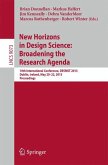This book aims to advance the study of social
technology in information systems through an
empirical exploration of communication and
information technology (ICT) use in four core
dimensions identity, interaction, affiliation, and
environment - as hypothesized in the social actor
model proposed by Lamb and Kling. Using a large
sample of North American academics, the research
identifies eight major types of ICT commonly used
among organizational members. The findings support
the social actor model in the context of
professional organizations, and reveal that
individual characteristics play a more prominent
role in use of technology than organizational
structural properties do. The results suggest that
the social actor model can be conceptualized more
parsimoniously in three dimensions and can explain
ICT use more precisely by considering moderating and
mediating effects. This book bridges the chasm
between the deterministic and social streams of IS
research. This book provides readers new theoretical
and managerial insights that could help scholars,
practitioners, and students to better understand the
dynamics information systems research.
technology in information systems through an
empirical exploration of communication and
information technology (ICT) use in four core
dimensions identity, interaction, affiliation, and
environment - as hypothesized in the social actor
model proposed by Lamb and Kling. Using a large
sample of North American academics, the research
identifies eight major types of ICT commonly used
among organizational members. The findings support
the social actor model in the context of
professional organizations, and reveal that
individual characteristics play a more prominent
role in use of technology than organizational
structural properties do. The results suggest that
the social actor model can be conceptualized more
parsimoniously in three dimensions and can explain
ICT use more precisely by considering moderating and
mediating effects. This book bridges the chasm
between the deterministic and social streams of IS
research. This book provides readers new theoretical
and managerial insights that could help scholars,
practitioners, and students to better understand the
dynamics information systems research.








